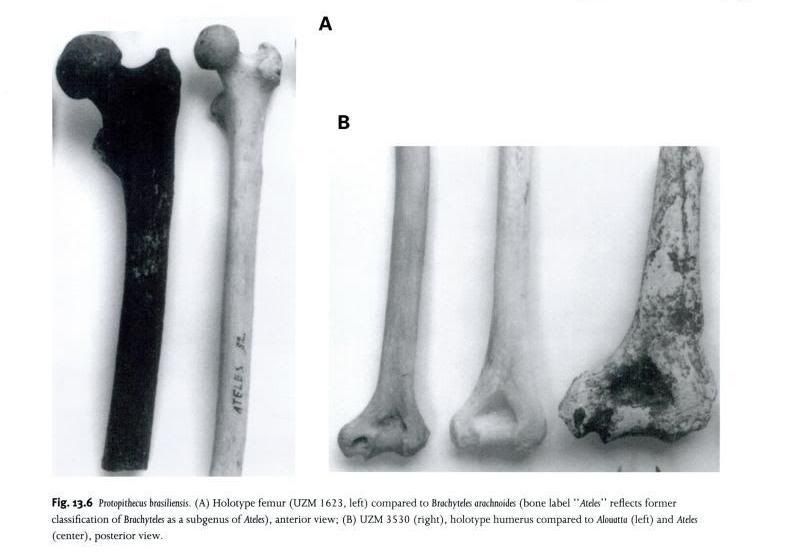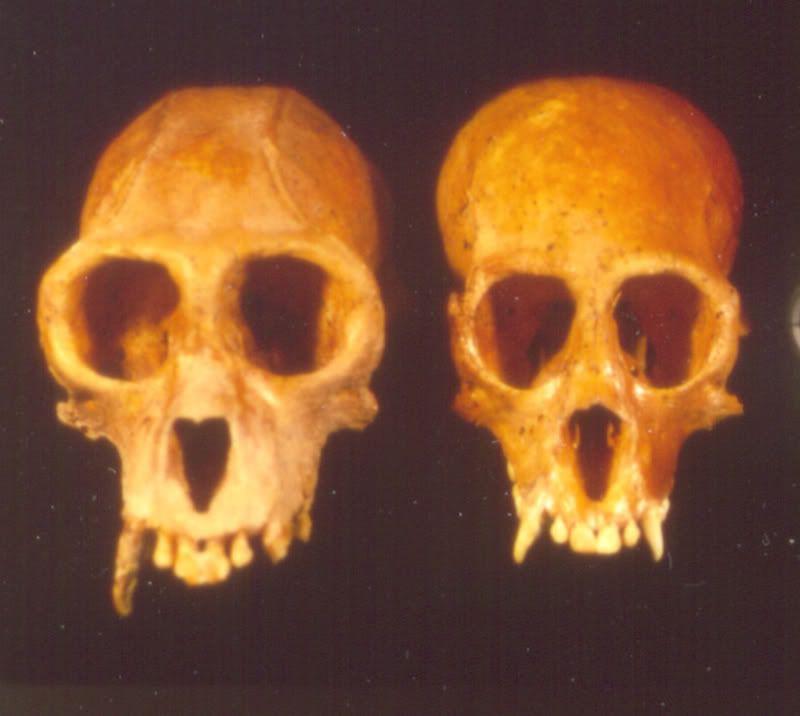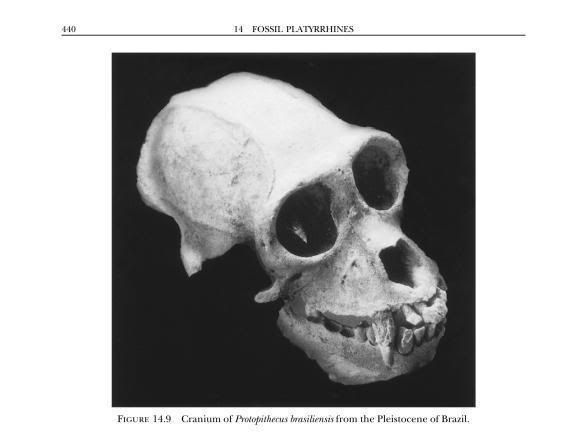|
|
Post by another specialist on Jul 30, 2008 19:46:58 GMT
 The Primate Fossil Record By Walter Carl Hartwig |
|
|
|
Post by another specialist on Jul 30, 2008 19:59:24 GMT
   The Primate Fossil Record By Walter Carl Hartwig |
|
|
|
Post by another specialist on Jul 30, 2008 20:14:52 GMT
 Frontal view of the crania of Protopithecus (left) and Caipora (right), both from Toca da Boa Vista. They resemble living South American monkeys that inhabit the top levels of the tropical forest canopy, but they were significantly larger than any living species. Further exploration of Toca da Boa Vista hopefully will yield more primate species that also were quite large compared to modern monkeys. 209.209.34.25/webdocs/anatomy/Brazil.htm |
|
|
|
Post by another specialist on Jul 31, 2008 12:25:29 GMT
 Primate Adaptation and Evolution By John G. Fleagle |
|
|
|
Post by amongthylacines on Jul 31, 2008 12:44:13 GMT
Mega-monkey - large fossil monkey found in South America
Discover, Sept, 1996
IN SOUTHERNMOST Amazonia in Brazil lies a huge cave called Toca da Boa Vista. A group of South American scientists were exploring the cave in 1992 when they unearthed the most complete fossil monkey ever found on the continent. Now, after nearly four years of fossil preparation and study, paleontologist Castor Cartelle and anthropologist Walter Hartwig know that their monkey-a member of the genus Protopithecus, which lived from 10,000 to 100,000 years ago-was unlike any other monkey running around South America today.
The first remains of Protopithecus- the top of a leg bone and a portion of an arm bone-were found by a Danish scientist in southern Brazil over 150 years ago, but the scanty remains didn't tell scientists much about the creature. Coincidentally, Hartwig was in Denmark doing some historical work on that find when Cartelle at the Federal University in Belo Horizonte announced the identity of the Toca da Boa vista fossil. The lure of a complete specimen of the mysterious monkey brought Hartwig to Brazil.
With slightly longer arms than legs, Protopithecus resembles the tree-swinging spider monkey, but its limb bones are nearly twice as thick. Hartwig says that this fossil is the first good evidence that monkeys, like other animals during the Pleistocene, grew larger. Protopithecus probably weighed in at about 50 pounds-twice as heavy as any living South American monkey. "Ecologically that's a profound difference," explains Hartwig. "Energy in the natural world is scrupulously accounted for, so to support a monkey species twice as heavy as any living species, the environment at the time this animal was alive had to be quite different from what it is today." Paradoxically, food might have been scarcer during this time, says Hartwig. Bigger monkeys would have been better equipped to survive con frontations with competitors for resources.
While Protopithecus's limbs resemble those of a spider monkey, its head is remarkably similar to a howler monkey's, which has a lower jaw that juts forward to accommodate an apple-size vocal sac. Protopithecus, then, may have been a bellower--a trait unique today to howlers.
Although closely related, howler and spider monkeys split from their common ancestor long before Protopithecus arrived on the scene. This, says Hartwig, means that the distinctive features of these modern monkeys have evolved more than once. "It would be a neat, closed picture if we had discovered only part of Protopithecus," explains Hartwig. "Instead we have in one animal the special characteristics of two different monkeys. All our assumptions about the anatomic relationships of living animals do not necessarily help us understand the fossil record when it comes to us in such completeness."
|
|
|
|
Post by another specialist on Jul 31, 2008 12:53:32 GMT
|
|